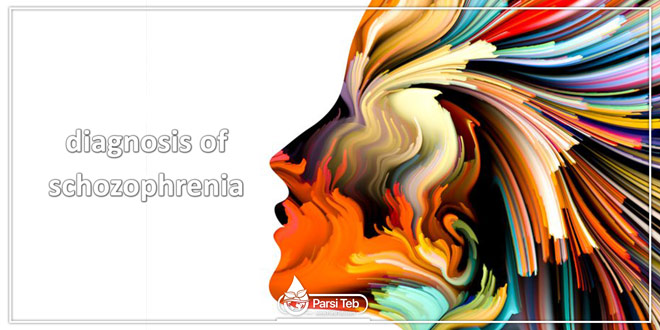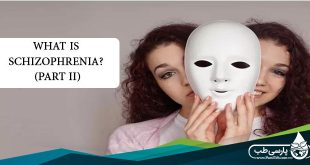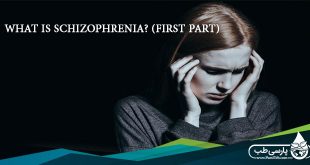Tests and diagnosis in schizophrenia
When doctors suspect someone has schizophrenia, they typically ask for medical and psychiatric histories, conduct a physical exam, and run a battery of medical and psychological tests and exams. These tests and exams generally include:
Laboratory tests. These may include a complete blood count (CBC), other blood tests that may help to rule out other conditions with similar symptoms, screening for alcohol and drugs, and imaging studies, such as an MRI or CT scan.
Psychological evaluation. A doctor or mental health provider will assess mental status and presence of psychosis by observing appearance and demeanor and asking about thoughts, moods, delusions, hallucinations, substance abuse and potential for violence or suicide.
Diagnostic criteria for schizophrenia
To be diagnosed with schizophrenia, a person must meet the criteria spelled out in the Diagnostic and Statistical Manual of Mental Disorders (DSM). This manual is published by the American Psychiatric Association and is used by mental health providers to diagnose mental conditions.
Diagnosis of schizophrenia involves ruling out other mental health disorders and determining that symptoms aren’t due to substance abuse, medication or a medical condition. In addition, a person must:
Have at least two of the common symptoms of the disorder — delusions, hallucinations, disorganized speech, disorganized or catatonic behavior, or presence of negative symptoms for a significant amount of time during one month
Experience significant impairment in the ability to work, attend school or perform normal daily tasks
Have had symptoms for at least six months
There are several subtypes of schizophrenia, but not everyone easily fits into a specific category. The five most common subtypes are:
Paranoid. Characterized by delusions and hallucinations, this type generally involves less functional impairment and offers the best hope for improvement.
Catatonic. People with this subtype don’t interact with others, get into bizarre positions, or engage in meaningless gestures or activities.
Disorganized. Characterized by disorganized thoughts and inappropriate expressions of emotion, this type generally involves the most functional impairment and offers the least hope for improvement.
Undifferentiated. This is the largest group of people with schizophrenia, whose dominant symptoms come from more than one subtype.
Residual. This type is characterized by extended periods without prominent positive symptoms, but other symptoms continue.
Schizophrenia is a chronic condition that requires lifelong treatment, even when symptoms have subsided. Treatment with medications and psychosocial therapy can help manage the condition. During crisis periods or times of severe symptoms, hospitalization may be necessary to ensure safety, proper nutrition, adequate sleep and basic hygiene.
A psychiatrist experienced in treating schizophrenia usually guides treatment. The treatment team also may include psychologists, social workers and psychiatric nurses and possibly a case manager to coordinate care. The full-team approach may be available in clinics with expertise in schizophrenia treatment.
Medications
Medications are the cornerstone of schizophrenia treatment. But because medications for schizophrenia can cause serious but rare side effects, people with schizophrenia may be reluctant to take them.
Antipsychotic medications are the most commonly prescribed to treat schizophrenia. They’re thought to control symptoms by affecting the brain neurotransmitters dopamine and serotonin. A person’s willingness to cooperate with treatment may affect medication choice. Someone who is uncooperative may need to be given injections instead of taking a pill. Someone who is agitated may need to be calmed initially with benzodiazapine such as lorazepam (Ativan), which may be combined with an antipsychotic.
Atypical antipsychotics
These newer medications are generally preferred, because they pose a lower risk of debilitating side effects than do conventional medications. They include:
Aripiprazole (Abilify)
Clozapine (Clozaril)
Olanzapine (Zyprexa)
Paliperidone (Invega)
Quetiapine (Seroquel)
Risperidone (Risperdal)
Ziprasidone (Geodon)
The Food and Drug Administration has approved Abilify and Risperdal for use in people ages 13 to 17. Side effects of atypical antipsychotic medications include weight gain, diabetes and high blood cholesterol.
Conventional, or typical, antipsychotics
These medications have frequent and potentially significant neurological side effects, including the possibility of developing a movement disorder (tardive dyskinesia) that may or may not be reversible. This group of medications includes:
Chlorpromazine (Thorazine)
Fluphenazine
Haloperidol
Perphenazine
These typical antipsychotics are often cheaper than newer counterparts, especially the generic versions, which can be an important consideration when long-term treatment is necessary.
It can take several weeks after first starting a medication to notice an improvement in symptoms. In general, the goal of treatment with antipsychotic medications is to effectively control signs and symptoms at the lowest possible dosage. The psychiatrist may try different medications, different dosages or combinations over time to achieve the desired result. Other medications also may be helpful, such as antidepressants or anti-anxiety medications.
Psychosocial treatments
Although medications are the cornerstone of schizophrenia treatment, once psychosis recedes, psychosocial treatments also are important. These may include:
Social skills training. This focuses on improving communication and social interactions.
Family therapy. This provides support and education to families dealing with schizophrenia.
Vocational rehabilitation and supported employment. This focuses on helping people with schizophrenia find and keep jobs.
Individual therapy. Learning to cope with stress and identify early warning signs of relapse can help people with schizophrenia manage their illness.
Many communities have programs to help people with schizophrenia with jobs, housing, self-help groups and crisis situations. A case manager or someone on the health care team can help find one. With appropriate treatment, most people with schizophrenia can manage their condition.
 Parsi Teb Physical and Mental Health Journal
Parsi Teb Physical and Mental Health Journal 



